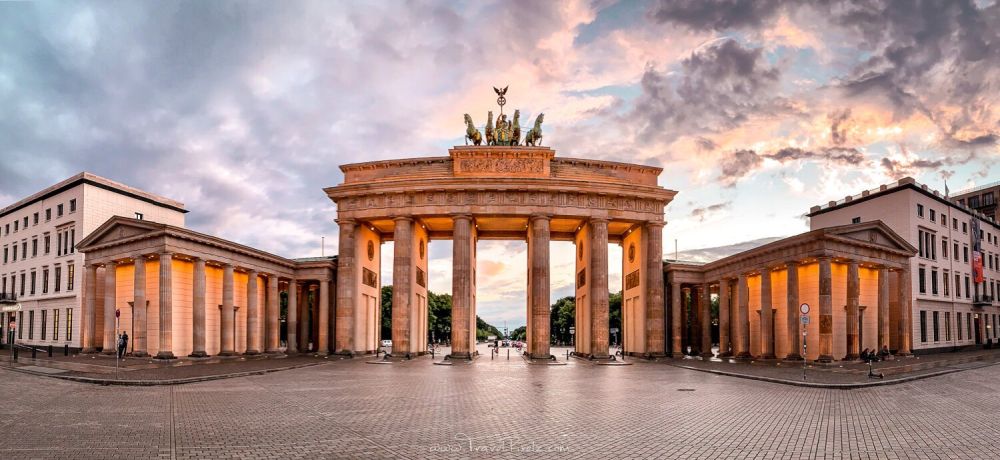

The Brandenburg Gate in Berlin stands not only as an architectural masterpiece but also as a symbol of Germany’s complex history. Over the centuries, this iconic landmark has witnessed the rise and fall of empires, was a site of significant political events, and has become one of the most recognizable representations of both Berlin and Germany to the world.
The construction of the Brandenburg Gate was completed in 1791 under the rule of Prussian king Frederick William II. Designed by Carl Gotthard Langhans, the neoclassical gate was inspired by the Acropolis of Athens and was part of a city gate, marking the start of the road from Berlin to the town of Brandenburg an der Havel.
Throughout its history, the Brandenburg Gate has been a site for major historical events. It has endured damage during the Napoleonic Wars, World War II, and has withstood the tests posed during the Cold War era, particularly when the Berlin Wall encased the structure, preventing access from both sides between 1961 and 1989. It's a powerful symbol of Germany's experiences during these turbulent times.
Tourism at the Brandenburg Gate began in earnest after the reunification of Germany. The Gate's prominence as a symbol of unity and peace made it a natural draw for visitors from around the globe. The fall of the Berlin Wall in 1989 and the subsequent reunification of East and West Germany in 1990 only magnified the importance of the site, transforming it into a significant landmark that represents peace and democracy.
Following Germany’s reunification, the Brandenburg Gate quickly became a pivotal point for tourists. The 2000s saw renewed interest and significant development in terms of tourism infrastructure in and around Berlin, with the Brandenburg Gate being one of the key focal points. Restorations pursued perfection to ensure the Gate maintained its historical and aesthetic integrity. The Gate now serves as an open pedestrian area and frequently hosts events, parades, and festivals, including spectacular New Year’s Eve celebrations.
Recent trends in tourism at the Brandenburg Gate reflect the digital age and the globalized context in which we live. There has been an effort to incorporate technology into the visitor experience; for instance, a visitor can participate in an augmented reality (AR) tour that provides a rich historical context and the experience of the Gate during different historical periods.
Sustainability has also become more prominent in tourism discussions. With Berlin's initiatives to become "greener," even historical sites like the Brandenburg Gate are part of efforts to reduce the city's carbon footprint and promote environmental sustainability.
Moreover, as COVID-19 has impacted global travel, there has been a trend toward virtual tourism. Virtual tours of the Brandenburg Gate allow those who cannot travel to experience the grandeur of the site from the comfort of their own home.
Visitors to the Brandenburg Gate today can explore a site that is both an active historical monument and a modern symbol of Berlin’s vibrant culture. The surrounding area has evolved to cater to the needs of tourists, with numerous information centers, guided tours, and interpretive panels in multiple languages to cater to the international audience.
The Brandenburg Gate remains a must-see for any traveler to Berlin, offering a tangible link between the city’s past and its future. Through its evolution from a city gate to a cornerstone of German history, it stands as a testament to resilience, unity, and the enduring nature of human spirit – making it a perennial favorite for tourists across the globe.